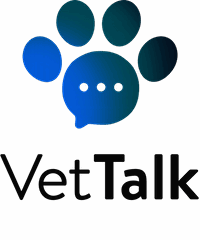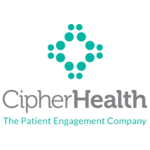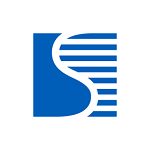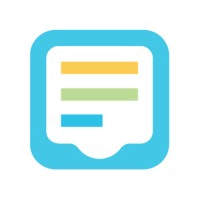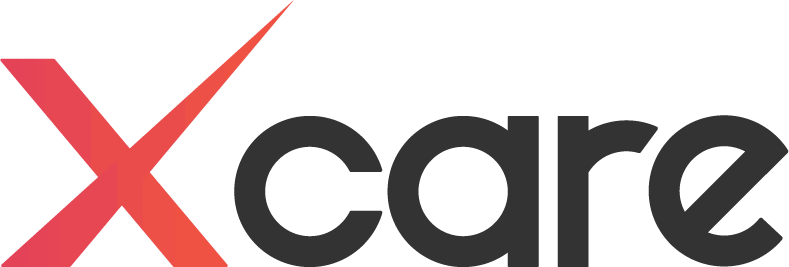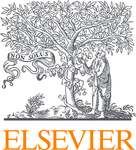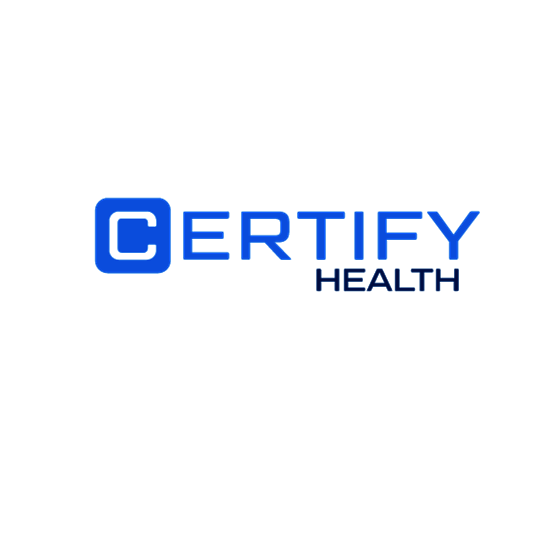Yes, most patient interaction software can be accessible via numerous devices and platforms, providing ease and flexibility. This implies that patients can use the software on their desktop computers, laptops, tablets, and smartphones, as well as a variety of operating systems including Windows, iOS, and Android. This ensures that patients may communicate with their healthcare providers and obtain critical information at any time and from any location.
List of 20 Best Patient Engagement Software
FormDr: A secure and easy-to-use platform specifically designed for healthcare providers to manage HIPAA-compliant online forms. With FormDr, you can seamlessly send, receive, and monitor patient forms, saving time and improving the intake process. T...Read More FormDr
VetTalk is a software that simplifies the sharing of educational resources with pet owners. Designed exclusively for veterinary hospitals, our platform provides the essential tools for educating pet owners and promoting their ongoing commitment to th...Read More VetTalk
Wambi is a employee recognition platform designed specifically for the healthcare industry. With Wambi, healthcare teams can strengthen their bonds and retain staff by fostering real-time connections and meaningful celebrations. Whether its boosting...Read More Wambi
Expert Advice is a virtual consultation tool tailored for dental professionals. Say farewell to travel hassles and scheduling issues – now your patients can receive prompt, convenient and efficient solutions for their dental needs without leav...Read More Expert Advice
Mend is a patient engagement solution designed to simplify and optimize your patient intake and communication procedures. Our platform offers fully customizable workflows for in-person and virtual care, along with secure telehealth capabilities that...Read More Mend
Pomelo Health is a platform that streamlines appointment scheduling, patient communication, and virtual healthcare services. With its user-friendly interface and top-notch security measures, it simplifies healthcare management, increases patient enga...Read More Pomelo Health
CarePassport - a user-friendly healthcare app designed to streamline the management and exchange of medical records for patients. With a vast network of 1,800 facilities, users can effortlessly access lab results, images, and other crucial informatio...Read More CarePassport
Relatient is a highly acclaimed healthcare software that enhances patient engagement and accessibility with its advanced scheduling and communication solutions. The Dash® platform is equipped with self-scheduling, instant communication, and mobile...Read More Relatient
CipherHealth is a digital engagement platform designed to enhance patient care through personalized and data-driven communication. Trusted by over 500 hospitals, our software empowers healthcare providers to deliver exceptional outcomes while measuri...Read More CipherHealth
Vocera Care Experience - a communication solution for healthcare teams that enhances patient care. With secure messaging and simplified processes, healthcare providers can efficiently communicate with patients, fostering a more empathetic and collabo...Read More Vocera Care Experience
Digitalrx.io solution for boosting your clinics online presence with ease. Say farewell to conventional appointments and welcome a seamless online booking process, virtual consultations, and secure doctor-patient communication. Our all-inclusive plat...Read More Digitalrx.io
ScienceSoft, the premier Healthcare CRM tool provider. Our innovative cloud-based platform is specifically designed to elevate patient care and satisfaction. Utilizing cutting-edge features like web content management and email marketing automation,...Read More ScienceSoft
Inbox Health is a solution for patient billing communication. By streamlining billing processes and improving patient support, Inbox Health revolutionizes the way medical practices manage payments. With easy integration with practice management syste...Read More Inbox Health
XCare is a and specialized solution designed to enhance clinic operations and patient experience. Boasting a multitude of features, our platform caters to all your clinics requirements. From smooth patient management to effective scheduling and commu...Read More Xcare
Pearly is a dental RCM solution for any organization. Enhance your revenue operations with intelligent workflows that handle patient billing and A/R management seamlessly. With a track record of serving over 1,000 dental organizations, including 100+...Read More Pearly
eVisit, the innovative virtual care platform designed to facilitate flexible and hardware-independent communication between patients and providers. Our cutting-edge solutions streamline workflow, enhance patient satisfaction, and seamlessly integrate...Read More eVisit
Discover the power of Elsevier, the top AI-powered healthcare policy management software. Our open-source system allows for effortless management and organization of policies, with the ability to handle large volumes at the click of a button. Access...Read More Elsevier
Certify Health is a solution for effortless patient registration. Our innovative 24/7 self-scheduling tool streamlines the process and maximizes productivity for both staff and patients. Say farewell to lengthy wait times and welcome a stress-free he...Read More Certify Health
Luma Health is a patient engagement solution designed to streamline the care process and enhance communication at every step. By seamlessly integrating with healthcare systems, Luma Health enhances operational efficiency and promotes better health ou...Read More Luma Health
Innovaccer - the leading Healthcare Data Platform used by over 96,000 healthcare professionals. Our state-of-the-art technology provides advanced analytics and data insights to top healthcare institutions in the US, resulting in unmatched ROI. With I...Read More Innovaccer - Healthcare Data Platform
Learn More About Patient Engagement Software
- What Is Patient Engagement Software?
- What Are The Recent Trends In Patient Engagement Software?
- Benefits Of Using Patient Engagement Software
- Important Factors To Consider While Purchasing Patient Engagement Software?
- What Are The Key Features To Look For In Patient Engagement Software?
- Why Do Businesses Need Patient Engagement Software?
- How Much Time Is Required To Implement Patient Engagement Software?
- What Is The Level Of Customization Available In Patient Engagement Software?
- Which Industries Can Benefit The Most From Patient Engagement Software?
- Conclusion
What Is Patient Engagement Software?
Patient Engagement Software is a strong tool that allows healthcare providers and organizations to successfully interact and communicate with their patients. It is a comprehensive digital solution that encourages patients to participate actively in their own healthcare process, hence improving outcomes and satisfaction. There are several critical elements that set patient engagement software apart.
First and foremost, it enables secure and convenient communication between patients and doctors, eliminating the need for in-person meetings or lengthy phone calls. Patients can now readily access essential medical information, get updates on appointments and test results, and ask questions or express concerns to their healthcare team. Second, patient engagement software provides a variety of interactive features such as patient portals, online appointment scheduling, and electronic forms.
These features allow people to manage their health on their own schedule, making the healthcare process more efficient and comfortable for both patients and physicians. Another important feature of patient interaction software is its capacity to offer individualized and tailored care.This program can gather insights into patient habits and preferences using data analytics and patient feedback, allowing doctors to design tailored treatment regimens that address each patient's unique needs. Furthermore, patient interaction software functions as a helpful educational tool.
The inclusion of educational tools and health information assists patients in better understanding their illnesses and treatment options, allowing them to make more educated decisions about their health. Finally, patient engagement software provides healthcare firms with extensive data management and analytics capabilities. Real-time data tracking and reporting enable providers to acquire significant insights into patient trends and outcomes, enabling for continuous improvement in care delivery.
What Are The Recent Trends In Patient Engagement Software?
In recent years, the use of Patient Engagement Software in healthcare facilities and practices has increased dramatically. This trend has been spurred by rising demand for patient-centered care and a shift to value-based payment methods. Patient Engagement Software includes a variety of features that help healthcare providers better engage and communicate with their patients, resulting in better health outcomes and patient satisfaction.
One of the most notable trends in Patient Engagement Software is the usage of mobile applications to engage patients. With the growing usage of smartphones and tablets, people now expect to have immediate access to their healthcare information and services. Mobile applications not only make it easy for patients to schedule appointments and access their medical records, but they also give educational resources and tools for managing their health issues.
Another trend propelling the adoption of Patient Engagement Software is the use of artificial intelligence (AI) and machine learning. These technologies enable healthcare providers to better understand their patients' needs and preferences, personalize their care plans, and gain real-time insights into patient behavior. For example, AI-powered chatbots can answer patients' inquiries, evaluate their symptoms, and help them stick to their drug regimen.
Furthermore, with an increasing emphasis on preventative treatment, Patient Engagement Software is including tools for patient health monitoring and tracking. This can include remote patient monitoring, wearables, and connected gadgets that enable patients to monitor their vital signs, activity levels, and symptoms. By collecting and evaluating this data, healthcare providers can identify high-risk patients and intervene early to prevent chronic illness exacerbations.
Finally, including telemedicine and telehealth technologies into Patient Engagement Software is a recent trend. This enables patients to conduct virtual visits with their doctors, obtain teleconsultations, and receive remote care from the comfort of their own homes. These features not only increase patients' access to care in remote areas, but they also provide convenience and cost savings to both patients and providers.
Overall, patient engagement software is evolving and expanding its capabilities to meet the changing requirements and expectations of patients and healthcare practitioners. Given the developments discussed above, it is apparent that this technology will continue to play an important role in determining the future of patient-centered care. As a buyer, you must consider these trends and carefully analyze the features and functionalities of available software to discover the best match for your healthcare practice.
Benefits Of Using Patient Engagement Software
Patient engagement software is a powerful tool that transforms how healthcare providers interact and engage with their patients. It use technology to bridge the gap between patients and healthcare practitioners, allowing for more efficient communication, individualized care, and better outcomes.
Here are some of the major advantages of adopting patient engagement software.
1. Improved Patient Communication: One of the key advantages of using patient engagement software is that it facilitates communication between patients and healthcare practitioners. Patients can easily contact with their providers using encrypted messaging, video conferencing, and virtual visits. This not only saves time and effort, but also enables convenient and timely communication, resulting in better patient results.
2. Improved Patient Education: Patient engagement software gives patients access to a variety of educational tools. Patients can obtain critical health information, instructional videos, and educational materials customized to their ailments. This not only improves patients' understanding of their health, but also gives them the ability to manage their own care.
3. Personalized Care: Patient engagement software enables healthcare providers to gather and evaluate patient data in real time. Using this information, physicians can develop tailored care plans and make evidence-based treatment decisions. This not only improves the quality of care, but also the patient experience.
4. Increased Efficiency And Productivity: Using patient engagement software, healthcare professionals may automate administrative chores like appointment scheduling, billing, and patient reminders. This improves efficiency and productivity, allowing doctors to focus more on patient care.
5. Increased Patient Engagement And Satisfaction: Using patient engagement software, healthcare providers can involve patients in their own care and treatment plans. This not only enhances patient participation but also improves patient satisfaction. Patients feel more involved in their care, which leads to a more positive overall experience.
6. Cost Savings: Patient engagement software can also help to save healthcare costs by improving patient outcomes and lowering the need for repeat visits or hospital readmissions. Patient engagement software can help patients and providers save money on healthcare by encouraging proactive and preventative care.
Important Factors To Consider While Purchasing Patient Engagement Software?
When it comes to acquiring patient engagement software, there are a few key elements to consider before making a purchase.
Here are some crucial aspects to consider while comparing alternative options:
1. Integration With Existing Systems: Before investing in new patient engagement software, be sure it works with your current electronic health record (EHR) system or other software. You don't want to cope with technological challenges or inefficiencies caused by incompatible systems.
2. Features And Functionality: Each patient engagement software has its unique set of features and functionalities designed to enhance the patient experience and communication. It is critical to precisely identify your organization's demands and prioritize the elements that are most vital to your specific requirements.
3. User-Friendliness: A user-friendly interface allows both patients and healthcare providers to effortlessly explore and use the program. Look for solutions with a simple and straightforward user interface to ensure a smooth adoption for all users.
4. Security And Compliance: Healthcare organizations prioritize patient data security. As a result, it is critical to thoroughly evaluate the security features of any patient engagement software you are considering. Ensure that it complies with HIPAA and other relevant rules.
5. Customization And Scalability: Because every healthcare facility has different demands and workflows, it's critical to select patient engagement software that can be tailored to your organization's procedures. Consider future growth and scalability.
6. Support And Training: Like any new software implementation, there may be a learning curve for both patients and employees. Look for vendors who provide extensive assistance and training to guarantee a seamless transition to the new system.
7. Reviews And References: Before making any final judgments, it is usually a good idea to get feedback and references from other healthcare organizations or industry professionals. This can provide vital information on the software's performance and user experience. By taking these crucial elements into account when evaluating patient engagement software, you can assure a successful installation and, ultimately, improve patient engagement and happiness at your healthcare facility.
What Are The Key Features To Look For In Patient Engagement Software?
Patient engagement software is an essential tool for healthcare providers looking to improve patient outcomes and happiness. However, with so many options available on the market, selecting the proper software can be difficult.
To assist you make an informed decision, we've put up a list of critical characteristics to look for in patient engagement software.
1. Customizable Patient Portal: A patient portal is the primary means of contact between patients and healthcare providers. It is critical to select software that includes a customisable patient portal, allowing you to brand it to reflect your organization's image. This will help you develop trust and engagement with your patients.
2. Convenient Appointment Scheduling: One of the primary benefits of patient engagement software is the ability for patients to schedule appointments online. Look for software with an easy-to-use interface that allows patients to arrange appointments whenever they want. This should offer the ability to examine available time slots, pick specific providers, and receive email or text reminders.
3. Secure Messaging System: Effective communication between patients and doctors is critical for scheduling appointments, administering prescriptions, and other areas of patient care. A decent patient interaction software should include HIPAA-compliant messaging capabilities that enable patients to safely communicate with their healthcare team.
4. Mobile Accessibility: In today's fast-paced environment, patient engagement software must be available from mobile devices. Look for software that has a mobile app or an adaptable website design, so patients can access the portal and engage with their healthcare team while on the road.
5. Patient Education Materials: Giving patients educational tools to assist them understand their diseases, treatments, and medications is an important aspect of patient engagement. Look for software that provides a broad library of instructional materials, such as films, articles, and infographics, which patients can readily access via the portal.
6. Interactive Features For Patient Engagement: Involving patients in their healthcare journey can improve health outcomes and satisfaction. Look for patient engagement software that includes interactive elements like health monitors, goal-setting, and rewards programs to encourage patients to take care of their own health.
7. Integration Into EHR Systems: To avoid data duplication and streamline operations, patient engagement software must be integrated with your electronic health record (EHR) system. This ensures that patient information is seamlessly synced across the two systems, removing the need for manual data entry.
Why Do Businesses Need Patient Engagement Software?
As technology advances and shapes the healthcare industry, patient engagement has become an important factor for firms to focus on. Patient engagement software enables organizations to successfully interact and communicate with their patients, resulting in improved patient outcomes and satisfaction. First and foremost, patient engagement software enables businesses to give tailored care to their patients.
With features like patient portals and secure messaging, businesses can simply send essential health information, appointment reminders, and test results to their patients. This level of customisation and convenience has been shown to improve patient satisfaction and adherence to treatment protocols. Furthermore, patient engagement software helps organizations minimize administrative duties and increase efficiency.
Online appointment scheduling, automated reminders, and digital forms help businesses and patients save time and resources. This enables businesses to focus on providing high-quality care while reducing no-shows and cancellations. Another significant feature of patient engagement software is its capacity to enhance patient education and self-management.
Patients can participate more actively in their own healthcare by using interactive patient education materials and self-monitoring systems. This leads to a better knowledge and management of their illnesses, which results in better health outcomes. Furthermore, patient engagement software promotes virtual care and telemedicine. With the advent of telehealth services, organizations may now use patient engagement software to provide virtual appointments, remote monitoring, and teleconsultations.
This not only increases patient comfort and accessibility, but it also creates new revenue streams for enterprises. Finally, in today's competitive healthcare environment, providing patient interaction software demonstrates a dedication to customer service and innovation. Businesses can use this software to differentiate themselves and attract patients who value convenience and individualized care.
How Much Time Is Required To Implement Patient Engagement Software?
The time required to adopt patient engagement software varies based on a number of factors, including the size of the healthcare organization, the software's complexity, and the level of customization necessary. However, on average, the implementation phase can last from a few weeks to a few months. To begin, the firm should set up time to pick and purchase the software.
This may include studying several possibilities, obtaining demos, and comparing prices. Once a decision has been made, the implementation process can begin. The initial stage in implementation is usually data migration. This includes migrating existing patient data from the organization's current system to the new program. The time necessary to complete this operation will be determined by the amount of data being transferred and the compatibility of the two systems.
Next, the program must be configured and modified to meet the organization's specific requirements. This may entail establishing patient portals, generating user accounts, and integrating the program with other systems. The complexity of the modification, as well as the software provider's responsiveness, can have an impact on the timeline for this step. Once the program has been configured, staff training is required for a successful implementation.
This may include training on how to use the program and interact with patients using it. The amount of time required for training will vary depending on the size of the company and staff members' familiarity with technology. Finally, the implementation process will be completed with a testing phase to ensure that the software runs smoothly and that all features work properly. This phase could take many weeks, depending on any complications that develop.
What Is The Level Of Customization Available In Patient Engagement Software?
Patient engagement software enables healthcare practitioners to actively engage patients in their own care by providing features such as online appointment booking, secure chat, and access to personal health records. When comparing different patient engagement software choices, purchasers should take into account the level of customisation provided.
The level of customisation in patient engagement software varies significantly depending on the platform and supplier. Some software may provide a limited number of adjustable options, but others may allow for extensive modification to fit the specific demands of each healthcare practice. When determining the level of customization, it is critical to evaluate both front-end and back-end modification capabilities.
Front-end customisation refers to the interface through which patients engage, such as a website or mobile app. Buyers should search for software that allows them to brand and personalize the front end to meet their practice's branding and style. Back-end customisation refers to the software's administrative and administration functionality. This includes the option to adapt workflows, forms, and notifications to meet the practice's individual needs and operations.
This level of personalization can significantly increase productivity and streamline patient engagement processes. It is also critical to assess the level of technical proficiency required for customisation. Some software allows for simple drag-and-drop customization, whilst others require coding ability. Buyers should examine their team's technical capabilities and select software that meets their needs.
Which Industries Can Benefit The Most From Patient Engagement Software?
Patient engagement software is a strong tool that has the potential to transform the healthcare business by enhancing communication, information availability, and patient outcomes. While this software offers various advantages, select industries can fully realize its potential and make the most effect.
In this buyer's guide, we'll look at which sectors can gain the most from patient engagement software.
1. Healthcare Providers: Patient engagement software is mostly used by hospitals, clinics, and private practices. This software enables them to improve contact with patients, communicate critical information like test results and appointment reminders, and include patients in their own care. Healthcare professionals can use patient engagement software to collect and analyze patient data in order to enhance services, uncover potential health hazards, and track patient progress.
2. Pharmaceutical Companies: Pharmaceutical firms can also profit from patient engagement software. Using this software, these businesses may collect vital information from patients regarding their prescription adherence, side effects, and overall satisfaction. This data can help pharmaceutical companies improve their goods and modify their marketing strategies to better match the needs of their target audience.
3. Insurance Companies: Patient engagement software can also be very beneficial to insurance companies. Insurance companies can construct individualized insurance plans by providing access to digitized health records. This software can also assist insurance companies track patient progress and detect potential hazards or gaps in care, allowing them to provide better coverage while lowering costs.
4. Long-Term Care Facilities: Patient engagement software can help long-term care facilities like nursing homes and rehabilitation centers. Patient engagement software can improve communication between staff and patients, provide access to medical records, and provide virtual communication options for patients and their families. It can also assist long-term care facilities in tracking patient medications, appointments, and care plans to ensure efficient and effective care.
5. Mental Health Practices: Patient engagement software can have a significant impact on mental health practices. This software allows patients to access internet resources, instructional materials, and virtual support groups. It also allows mental health doctors to follow patient progress and perform remote therapy sessions, making mental health care more accessible and convenient for patients.
6. Research Institutions: Finally, research institutions can profit from patient engagement software since it supplies them with a vast amount of patient data to study. This program can help research institutions uncover trends, patterns, and potential health dangers, resulting in the creation of more effective treatments.
Conclusion
Finally, patient engagement software provides healthcare clinicians with the tools they need to actively include patients in their own care, hence improving overall outcomes. With its user-friendly design, customizable features, and powerful analytics capabilities, this software is an invaluable asset to any healthcare institution. Patient engagement software simplifies contact between patients and doctors by including features such as patient portals, appointment scheduling, and secure messaging, resulting in greater patient satisfaction and loyalty.
It also enables remote patient monitoring and telemedicine capabilities, so increasing patient access to care while eliminating unnecessary office visits. Furthermore, patient engagement software's analytics provide significant insights and data, helping healthcare businesses to better understand their patients and personalize their services to their individual requirements. This can lead to better patient outcomes and lower expenses.
When evaluating patient engagement software, it is critical to examine your organization's specific needs and goals and select a solution that meets them. Make sure you thoroughly explore various solutions, taking into account scalability, data security, and interconnections with existing systems. With the appropriate patient engagement software, healthcare professionals can transform their patient engagement efforts and, as a result, improve the overall quality of care for their patients. We hope this buyer's guide has helped you make an informed decision for your organization.
Patient Engagement Software FAQ's
Can Patient Engagement Software Be Accessed Across Multiple Devices And Platforms?
Is Patient Engagement Software Future-Proof And Adaptable To Emerging Technologies Like AI, Blockchain Or IoT?
Yes, patient engagement software is meant to be future-proof and adaptable to upcoming technologies such as artificial intelligence, blockchain, and Internet of Things. Patient engagement software must keep up with the latest technological breakthroughs to ensure the best possible outcomes for patients. These software solutions are constantly updated and improved to accommodate new technology, making them flexible and adaptable to the future of healthcare.
Is There A Free Trial Offered To Assess Patient Engagement Software Before Committing?
Yes, many patient engagement software companies provide a free trial of their program so that you can analyze its features and capabilities before making a purchase. This enables healthcare organizations to evaluate the software and assess whether it fits their requirements and enhances patient involvement.
Some vendors may additionally provide a demonstration or consultation to help you grasp the software's benefits. It is critical to take advantage of a free trial to confirm that the software is the correct fit for your organization.
Does Patient Engagement Software Offer Data Security Features And Meet Regulatory Compliance Standards?
Yes, most patient engagement software has strong data security safeguards and meets regulatory compliance criteria like as HIPAA and GDPR. These features include encrypted data storage, secure message delivery, and access controls to ensure the privacy and security of sensitive patient data. In addition, frequent security assessments and updates are performed to ensure compliance and protect patient data.
Can Patient Engagement Software Integrate Seamlessly With Existing Tools And Platforms?
Yes, patient engagement software can work perfectly alongside existing tools and platforms. Many patient interaction software options enable integration with a wide range of systems, including electronic health records, telemedicine platforms, and practice management software.
This enables the smooth and effective flow of information between various systems, ultimately improving the overall patient experience. Furthermore, the usage of application programming interfaces (APIs) simplifies and customizes the integration process for unique requirements.


